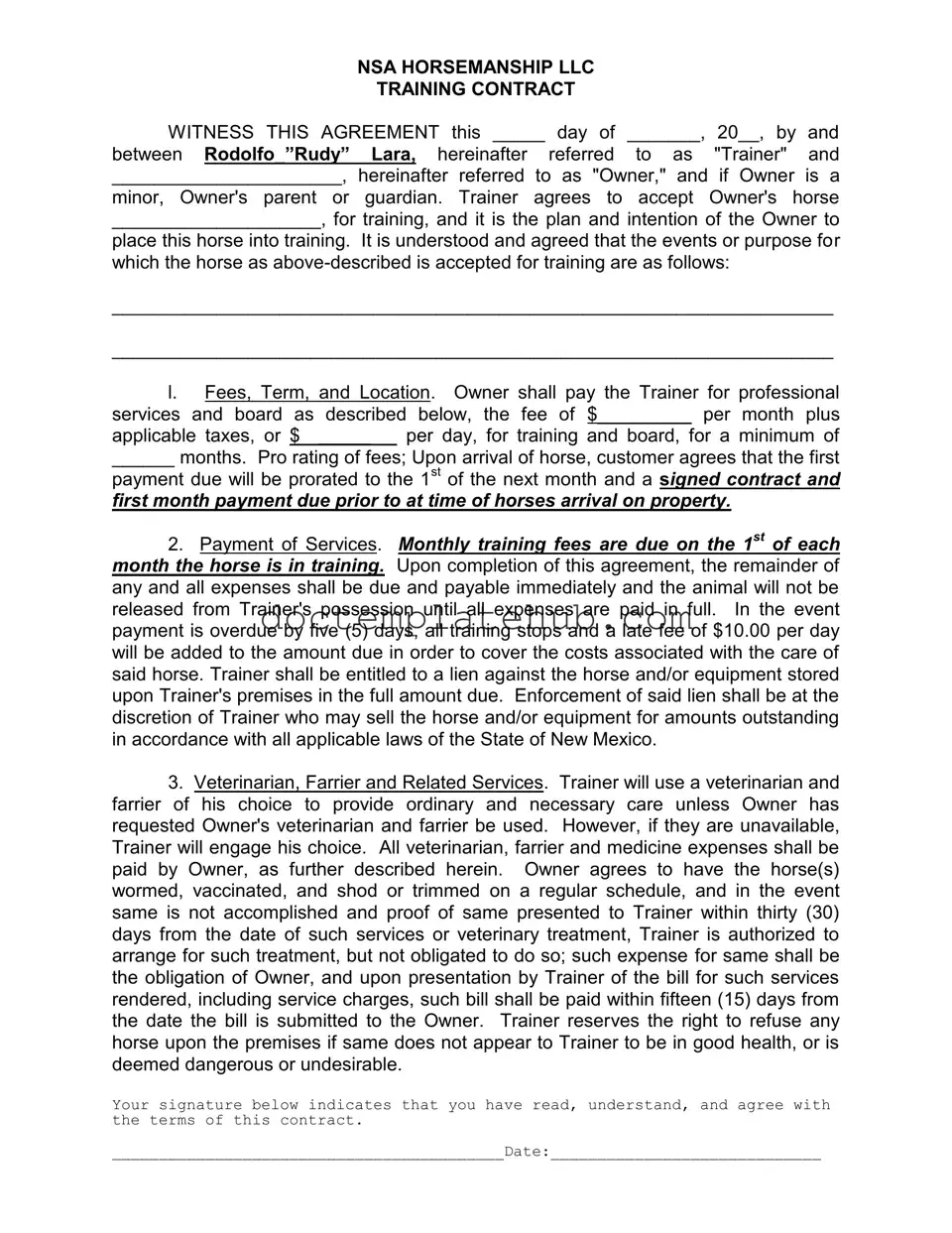What is a Horse Training Contract?
A Horse Training Contract is a legal agreement between a horse owner and a trainer. This document outlines the terms and conditions under which the horse will be trained. It specifies details such as fees, duration of training, care responsibilities, and the rights of both parties. The contract serves to protect both the owner and the trainer by clearly defining expectations and obligations.
What are the key responsibilities of the trainer and the owner?
The trainer is responsible for providing professional training and care for the horse, ensuring it is healthy and well-fed. The trainer also has the authority to make decisions regarding veterinary care and training methods. On the other hand, the owner must pay the agreed-upon fees on time, provide necessary health documentation, and ensure that the horse is in good health before training begins. Both parties must communicate effectively, especially regarding any changes in the horse's health or training needs.
What happens if the horse dies or becomes unfit for training?
If the horse dies, is sold, or becomes unfit for training, the trainer has the option to accept another horse or terminate the agreement. In such cases, the owner must pay any outstanding fees before the contract is considered terminated. This clause protects the trainer's interests while also providing the owner with options in difficult situations.
Are there any risks involved in horse training?
Yes, there are inherent risks associated with horse training. The owner acknowledges that horses can behave unpredictably, which may lead to injury or accidents. While the trainer is expected to exercise ordinary care, they are not liable for injuries or losses that occur unless due to negligence. Owners are encouraged to obtain insurance for their horses to mitigate potential financial losses.
Can the contract be changed or terminated?
Yes, the Horse Training Contract can be changed or terminated by the trainer with thirty days' notice. The owner is also required to provide thirty days' notice if they wish to discontinue services. If the owner removes the horse before the agreed training period, an early termination fee may apply. This flexibility allows both parties to adapt to changing circumstances while ensuring that obligations are met.
